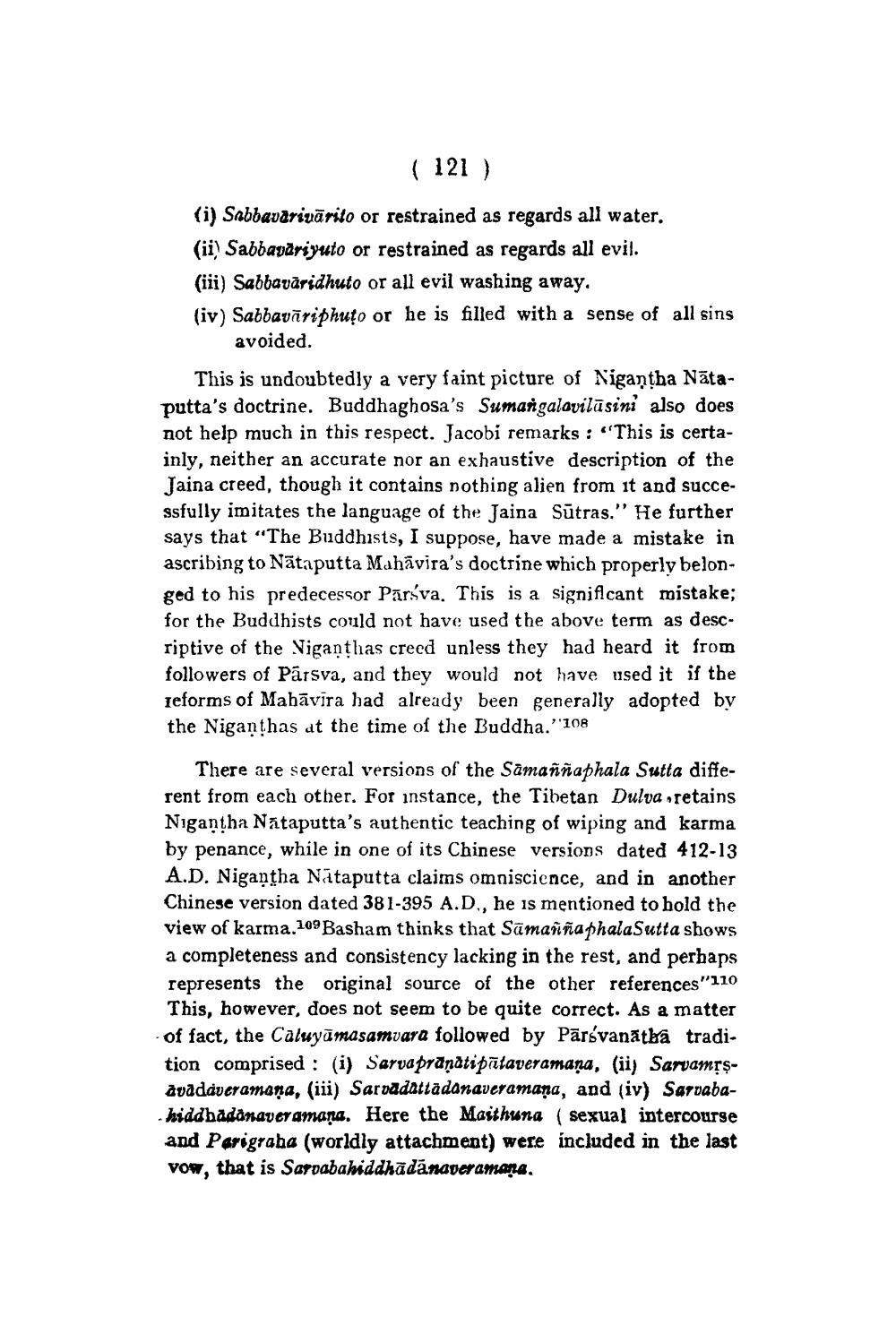________________
( 121 )
(i) Sabbavarivārito or restrained as regards all water. (ii) Sabbaväriyuto or restrained as regards all evil. (iii) Sabbavāridhuto or all evil washing away. (iv) Sabbavāriphuto or he is filled with a sense of all sins
avoided.
This is undoubtedly a very faint picture of Nigamtha Nātaputta's doctrine. Buddhaghosa's Sumangalovilāsini also does not help much in this respect. Jacobi remarks : "This is certainly, neither an accurate nor an exhaustive description of the Jaina creed, though it contains nothing alien from it and successfully imitates the language of the Jaina Sūtras." He further says that “The Buddhists, I suppose, have made a mistake in ascribing to Nātaputta Mahavira's doctrine which properly belonged to his predecessor Paráva. This is a significant mistake; for the Buddhists could not have used the above term as descriptive of the Niganthas creed unless they had heard it from followers of Pārsva, and they would not have used it if the jeforms of Mahāvīra had already been generally adopted by the Niganthas at the time of the Buddha.''108
There are several versions of the Samaññaphala Sutta different from each other. For instance, the Tibetan Dulva , retains Nigantha Nataputta's authentic teaching of wiping and karma by penance, while in one of its Chinese versions dated 412-13 A.D. Nigantha Nätaputta claims omniscience, and in another Chinese version dated 381-395 A.D., he is mentioned to hold the view of karma.109 Basham thinks that SamannaphalaSutta shows a completeness and consistency lacking in the rest, and perhaps represents the original source of the other references"110 This, however, does not seem to be quite correct. As a matter of fact, the Caluyāmasamvara followed by Pārsvanatha tradition comprised : (i) Sarvapranatipātaveramana, (ii) SarvamȚsavadaveramana, (iii) Sarvadattādanaveramana, and (iv) Sarvabahiddbadanaveramana. Here the Masthuna (sexual intercourse and Parigraba (worldly attachment) were included in the last Vow, that is Sardabahiddhādānaveramana.




